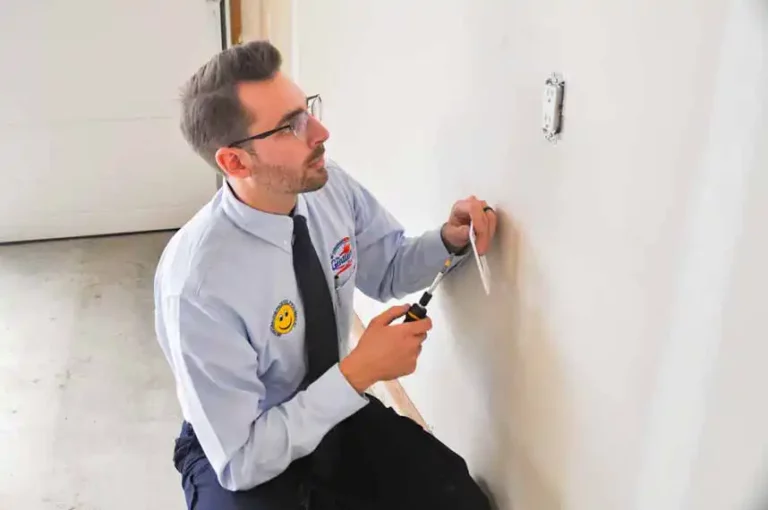
Same Day Service
Since 2001
Call The Gentleman Pros Now!
403-755-4914

We are so used to the convenience of flipping a switch or plugging an item into an outlet and having it work. It can really be a fly in the ointment when they don’t. And it can be even more irritating when you constantly need an outlet in a spot where there isn’t one.
“Excellent service from Matthew today! Very informative and made sure I knew what was going on before completing any tasks. We have always used the gentleman pros and will continue to do so.” IIla W

We can take installing outlets and switches off your to-do list. Think of the time you would free up and the annoyances you would remove by giving us a call. All you have to do is let us in and then enjoy having functional switches and outlets exactly where you need them.
You want skilled honest electricians to do your work. You are letting them into your home, so along with having the expertise you want them to have integrity. We carefully screen our employees to make sure they aren’t only skilled but they are also honest and trustworthy.
Working with you they will install your outlets and switches where you need them and ensure they meet all the codes and regulations. Did you know there are regulations regarding the type of outlet or switch to use in specific situations? Or that there are regulations about how high you can install outlets and the maximum distance between outlets? We did, we know all the rules and regulations.
We believe in our electricians wholeheartedly and offer a customer satisfaction guarantee. We will refund your money if the work is not done to local, provincial, and national guidelines.
If you are ready to put in some new outlets and switches give us a call at (403) 755-4914. We have a friendly customer service agent available 24/7 to answer your call. Or click on the Chat With Us button at the bottom of the page, or fill out our online form.
A switch is a switch, right? Well, no. There are several different types of electrical switches all suited for use in different situations.
An electrical switch either opens or closes an electrical circuit to the device it operates. It stops or allows the flow of electricity to the device it controls.
For explanation purposes, we will use a light switch. When the switch is in the “off” position, the circuit is open, stopping the flow of electricity, and turning off the light. When it is in the “on” position, the circuit is closed, allowing electricity to flow and turning on the light.
Switches can be used to control a variety of devices (e.g., lights, fans, garburators). We will refer to them as light switches to simplify matters in this article.
These are the standard and have been for a very long time. It has a toggle that looks like a ski slope or a nose that sticks out from the faceplate. They usually have ON/OFF embossed on the faceplate.
These are the most common switches in houses. They supply 120 V and 15-20 amps of electricity to the device the switch controls. Single-pole switches control one fixture or device from one location.
Why is it called a single-pole switch? To answer that, we have to go back to the circuit breakers in the electrical panel.
Every branch circuit branches off from the two bus bars in the electrical panel. Poles are the connection points on the bus bars.
A single-pole breaker connects to one pole and has one hot wire attached to the breaker. It supplies 120 V and 15-20 amps of electricity to its branch circuit. A double-pole breaker attaches to two poles and two hot wires are attached to the breaker. It supplies 240 V and 20-50 amps to its branch circuit.
Now back to the switches. They are called single-pole switches because one hot wire is attached to the switch coming from a single-pole circuit breaker.
Two hot wires are attached to a double-pole switch providing 240 V of electricity. They are more commonly used in industrial settings. Though they can be used as safety shut-offs or disconnects on our larger appliances such as an air conditioner.
A three-way switch operates one fixture from two different locations. They are usually used at the top and bottom of stairs, at different ends of a hallway, or in other areas which have two entries (e.g., garages and basements).
The same as a three-way switch, but it operates one fixture from three different locations.
Similar to a toggle switch but more decorative. They have a wider and flatter switch and need less pressure than a toggle to move between the on and off position.
Dimmer switches allow you to adjust the brightness of the lights. They come in different styles. Including rotary dimmers where you turn a knob to change the brightness of the lights or sliding dimmers where you slide a toggle to control the lights.
Fairly self-explanatory. It uses motion to turn off and on the light. They are often used in security lighting.
They can also be used in rooms and are a great way to conserve energy. You never have to remember to turn off the light, it will automatically turn off when it senses you have left the room. In this use, they are sometimes called occupancy switches.
Smart switches allow you to wirelessly and remotely control the switch from any internet-connected device like your smartphone.
If you pair it with a voice assistant device such as Alexa or Google Home. When used with a voice assistant, smart switches are our modern-day equivalent to the old-school clap-on clap-off lights.
These switches are also programmable, so you can put the fixture they control on a timer or a schedule for when they turn on or off.
There are a variety of specialty switches. From switch outlet combos to switches with timers to illuminated switches. An illuminated switch is a combination switch and night light, really handy in the hallway between your bedroom and the bathroom.



